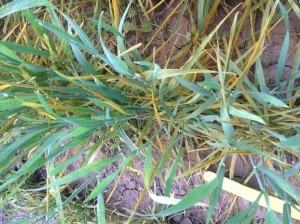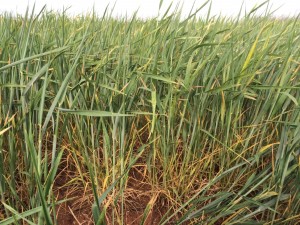Clark Neely, State Small Grains Agronomist:
Warmer temperatures are helping some wheat producers in Texas while hurting others at the same time. As temperatures warm into the 80’s for much of the state, incidence of stripe rust is starting to fade in areas from South Texas north through the Texas Blacklands (Figure 1). However, some areas of high stripe rust pressure remain throughout portions of West Central Texas (Figure 2). With flag leaves recently emerged or nearly emerged in most locations, growers need to scout fields regularly to protect the flag leaf if active rust is detected.
Leaf rust has been detected in mostly low levels across the state all winter and spring, but most growers have yet to see any significant damage from this disease. While the warmer temperatures are beginning to hinder further stripe rust development, it is still not too late for leaf rust to develop.
Up to this point in the wheat growing season, much of Texas has received beneficial rains that have led to good stands and above normal crop condition rating for the state for this time of year. However, large portions of the Rolling Plains and High Plains, still remain dry (Figure 3) and immediate precipitation is needed to prevent yield reductions in dryland fields. Wheat is currently in a rapid grow stage (jointing and boot stages) and requires much of the moisture now that it will utilize during its life cycle. Warming temperatures only increase evapotranspiration and water requirements.
Earlier reports of army cutworm and now aphids (Figure 4) and brown mites have further exacerbated drought stressed wheat in portions of the Panhandle. Aphids are also reported in Oklahoma and the Texas Blacklands. Growers will need to consider current yield potential and forecasted moisture to determine whether they will recoup the cost of applying a pesticide. More information on diseases and insects in wheat can be found at http://sickcrops.tamu.edu and http://varietytesting.tamu.edu/wheat.



